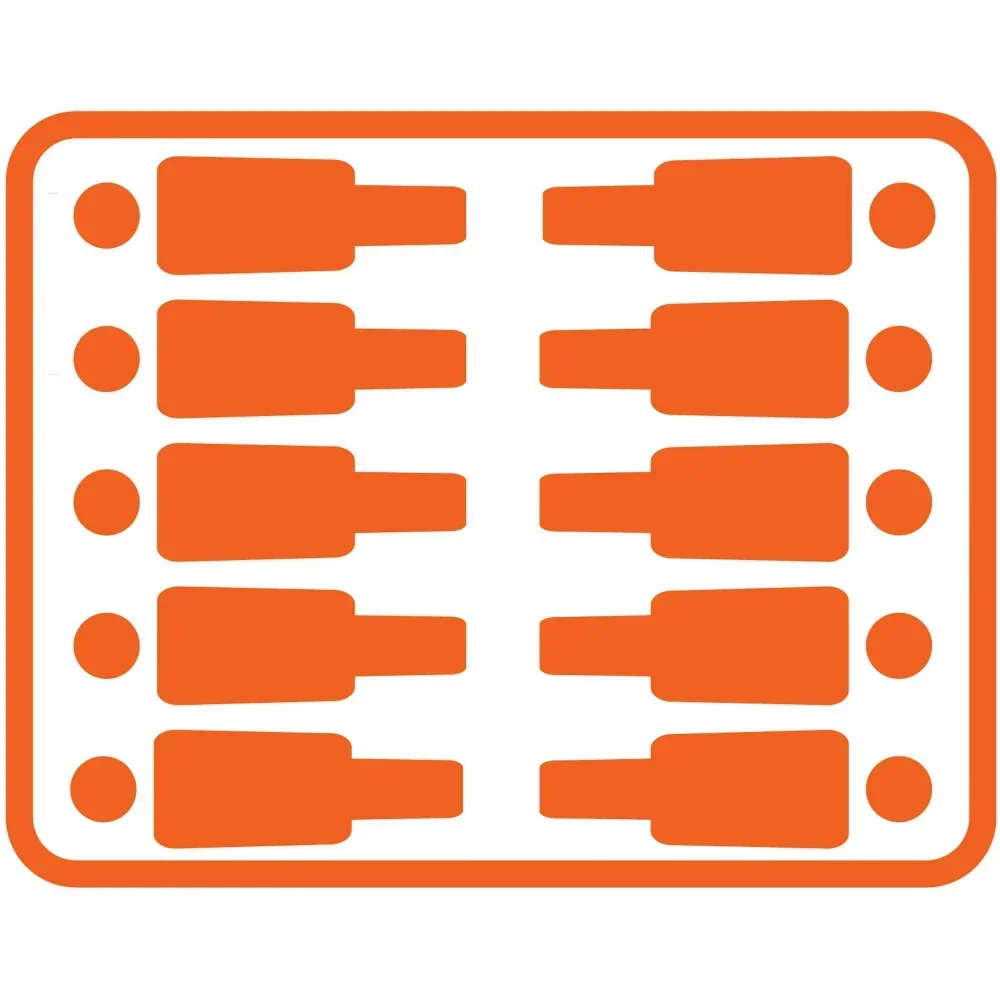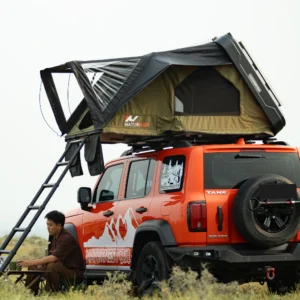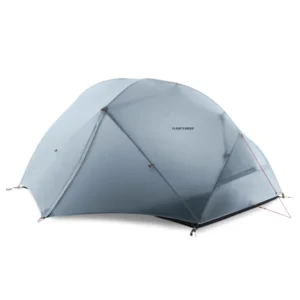Introduction: Understanding the Critical Differences Between Snow and Regular Tents
Selecting the right shelter can make or break your outdoor adventure. When winter conditions roll in, the distinction between snow tents (commonly called 4-season tents) and regular tents (3-season tents) becomes critically important. These differences aren’t merely about marketing—they can directly impact your safety, comfort, and even survival in harsh conditions.
Snow tents are specifically engineered to withstand extreme winter environments with heavy snowfall, fierce winds, and freezing temperatures. Regular tents, by contrast, are designed for milder conditions when protection from rain, moderate winds, and insects is the primary concern.
Throughout this guide, we’ll explore:
* The structural differences that allow snow tents to withstand harsh winter conditions
* How each tent type manages temperature, moisture, and weather protection
* When it’s safe to use a regular tent in winter—and when it’s absolutely not
At Explore Elements, we’ve field-tested hundreds of tents in diverse environments—from scorching deserts to snow-covered alpine terrain. Understanding different shelter options for two campers is essential for making informed decisions about your gear investment and ensuring your outdoor experiences remain safe and enjoyable.
What “Seasons” Really Mean in Tent Terminology
When shopping for tents, you’ll frequently encounter season ratings. Despite what the name suggests, these ratings don’t strictly correspond to calendar seasons but rather indicate a tent’s capability to handle different weather conditions.
3-Season Tents (Regular Tents):
* Designed for spring, summer, and fall use
* Optimized for mild to moderate conditions
* Focus on ventilation, moderate rain protection, and lightweight portability
* Typically handle temperatures down to about 30°F (-1°C) with proper sleeping gear
* Not engineered for snow loads or extreme winds
4-Season Tents (Snow Tents):
* Engineered primarily for winter conditions
* Built to withstand snow accumulation, high winds, and extreme cold
* Sacrifice ventilation and weight savings for strength and weather resistance
* Can be used in any season, but may feel stuffy and heavy in summer
Some manufacturers offer “3-4 season” or “extended season” tents as a middle ground—stronger than standard 3-season models but more ventilated than true winter tents. Understanding these designations helps you assess which option aligns with your adventure needs.
The specific four-season tent features and benefits include crucial design elements that separate these shelters from their fair-weather counterparts, creating a foundation for their exceptional winter performance.
Structural Design and Materials: The Foundation of Performance Differences
The fundamental differences between snow tents and regular tents begin with their structural design and materials—these elements create the foundation for all other performance variations.
Pole Structure and Framework
| Feature | Snow (4-Season) Tents | Regular (3-Season) Tents |
|---|---|---|
| Pole Material | Typically aluminum alloy | Aluminum or carbon fiber |
| Pole Diameter | 9-11mm (thicker) | 8.5-9mm (thinner) |
| Pole Configuration | Geodesic or dome design with crossing poles | Simpler A-frame or tunnel designs |
| Number of Poles | More poles (4-6+) for added strength | Fewer poles (2-3) to reduce weight |
| Connection Method | Often sleeve designs for stronger attachment | Frequently clip attachments for easier setup |
Snow tents feature robust pole systems—often utilizing geodesic designs where poles cross at multiple points—creating a structure that can withstand significant snow loads from above and fierce winds from any direction. Regular tents use simpler pole arrangements that save weight but provide less structural integrity under pressure.
Fabric Differences
Snow tents utilize heavier, more durable fabrics (often 70+ denier) with higher tear strength and abrasion resistance. Their rainflies and floor materials frequently have higher waterproof ratings (3000-5000mm hydrostatic head) compared to regular tents (1500-2000mm). The additional reinforcement at stress points and extra guy-out points distribute tension more effectively during storms.
Regular tents prioritize weight savings with lighter fabrics (typically 20-40 denier) that provide adequate protection in mild conditions but can fail under heavy snow loads or sustained high winds.
These structural differences directly translate into how each tent type performs in various weather conditions, making specialized 4-season winter 2-person tents essential for serious winter adventures rather than luxury items.
Weather Protection: How Each Tent Type Handles the Elements
When facing nature’s fury, snow tents and regular tents demonstrate dramatic differences in their protective capabilities.
Wind Resistance
Snow tents are engineered to withstand significant wind forces, often rated for sustained winds of 40+ mph with gusts potentially reaching 60-70 mph when properly anchored. Their low-profile, aerodynamic shapes (typically dome or geodesic designs) minimize wind resistance while their robust pole structures prevent collapse.
Regular tents typically handle winds in the 15-30 mph range. Beyond this threshold, their taller, less aerodynamic designs and lighter pole structures may bend excessively, potentially leading to pole damage or complete tent failure.
Snow Load Handling
The steep angles of snow tent roofs prevent significant snow accumulation, allowing snow to slide off rather than build up. Their stronger frames can support 10-20 pounds per square foot of snow before showing signs of strain.
Regular tents often feature flatter roof sections where snow can accumulate quickly. Just a few inches of wet, heavy snow can exceed their structural capacity, potentially causing pole bending or breakage during the night—a dangerous situation in remote winter environments.
Rainfly Coverage and Design
Snow tents typically feature:
* Full-coverage rainflies extending to the ground
* Minimal or closable mesh areas in the inner tent
* Snow skirts or flaps that can be buried to prevent updrafts
* Higher waterproof ratings for extended precipitation exposure
Regular tents often utilize:
* Partial rainfly coverage that prioritizes ventilation
* Extensive mesh panels for airflow
* Standard staking points without snow-specific anchoring options
Understanding how navigating nature’s fury requires durable tents designed specifically for extreme conditions helps explain why specialized equipment is necessary for winter adventures.
Thermal Management: Warmth Retention vs. Ventilation
One common misconception is that tents provide significant insulation against cold. In reality, tents primarily function as wind barriers and moisture protection—their warming effect comes mainly from trapping some body heat and blocking wind chill.
Inner Tent Construction
Snow tents prioritize heat retention with:
* Minimal mesh panels (often with zippered fabric covers)
* Solid fabric walls that block wind and retain some warmth
* Lower ceiling heights in some designs to reduce the heating volume
* Smaller, closable ventilation ports rather than large mesh panels
Regular tents emphasize ventilation with:
* Extensive mesh panels for maximum airflow
* Taller designs that allow hot air to rise away from occupants
* Fixed ventilation systems that can’t be fully closed
* Rainflies that often sit higher off the ground, allowing air movement
Condensation Management
Condensation becomes a critical concern in winter camping—moisture from breathing, cooking, and wet gear can freeze on tent walls, creating uncomfortable conditions and potentially dampening sleeping gear.
Snow tents address this with:
* Strategically placed adjustable vents that can be opened without allowing snow entry
* Double-wall construction creating an air gap between inner tent and rainfly
* Vapor-permeable inner tent materials that allow moisture to escape
* Larger vestibules for cooking and storing wet gear outside the sleeping area
Regular tents rely primarily on extensive mesh panels for condensation control—an approach that works well in warmer conditions but creates a ventilation-warmth tradeoff unsuitable for winter camping.
For those planning winter expeditions, specialized winter camping tents feature design elements specifically engineered for cold-weather thermal management while maintaining necessary ventilation.
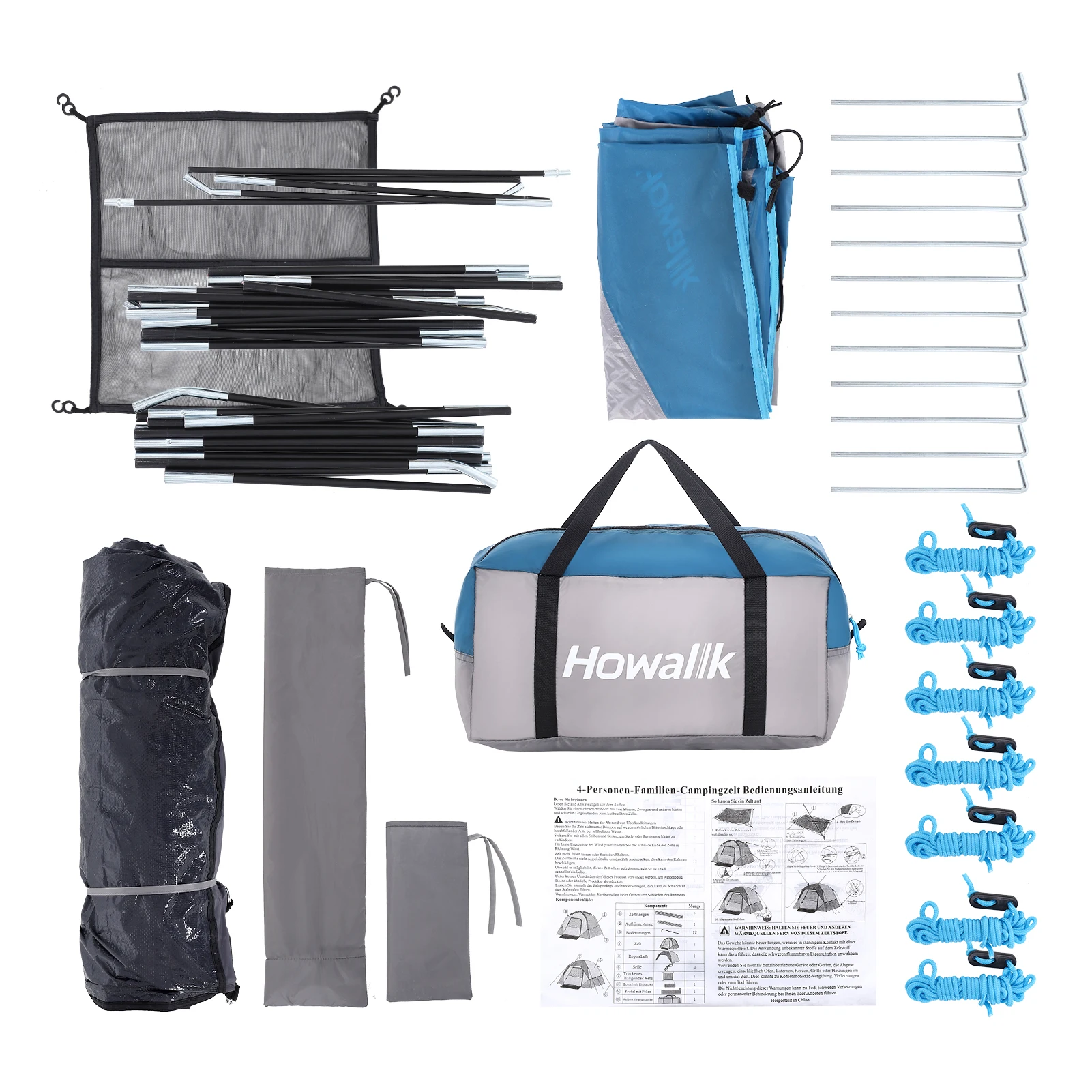
Weight and Portability Considerations
The enhanced protection of snow tents comes with a notable weight penalty—a critical consideration for backpackers and mountaineers who must carry their shelter.
Weight Comparison
| Tent Capacity | Typical Snow Tent Weight | Typical Regular Tent Weight |
|---|---|---|
| 1-Person | 4-6 lbs (1.8-2.7 kg) | 2-3 lbs (0.9-1.4 kg) |
| 2-Person | 6-9 lbs (2.7-4.1 kg) | 3-5 lbs (1.4-2.3 kg) |
| 3-Person | 8-12 lbs (3.6-5.4 kg) | 5-7 lbs (2.3-3.2 kg) |
| 4-Person | 10-16 lbs (4.5-7.3 kg) | 7-9 lbs (3.2-4.1 kg) |
Snow tents also pack larger, often requiring 20-40% more pack space than their 3-season counterparts. This size difference can significantly impact backpack organization and capacity for multi-day trips.
The weight-to-strength ratio represents the fundamental tradeoff between tent types. Regular tents prioritize lightweight portability for long-distance hiking in mild conditions, while snow tents sacrifice weight savings for the structural integrity needed in extreme environments.
For those seeking to minimize pack weight while maintaining adequate protection, understanding what makes lightweight tents ideal for trekking helps balance these competing priorities based on the specific environmental challenges you’ll face.
Setup and Usability in Different Environments
The practical experience of setting up and using each tent type differs substantially, particularly in challenging conditions.
Snow tents typically require:
* Longer setup times (often 8-15 minutes with practice)
* More complex pole configurations with multiple crossing points
* Special snow anchoring techniques rather than standard stakes
* Site preparation (snow platform creation, wind assessment)
* Larger clearing areas due to more extensive guy line systems
Regular tents offer:
* Quicker setup (typically 3-7 minutes with practice)
* Simpler, more intuitive pole structures
* Standard staking procedures designed for soil or sand
* Less site preparation requirements
* Smaller footprints requiring less clearing
Setting up any tent in winter conditions presents unique challenges—thick gloves reduce dexterity, cold materials become less flexible, and standard stakes prove useless in snow. Mastering winter and snow tent setup requires specialized techniques like using snow stakes, deadman anchors (buried objects like stuff sacks filled with snow), or tying guy lines to buried ski poles or snowshoes.
The increased setup complexity of snow tents represents a worthwhile tradeoff for the security they provide when winter storms intensify after dark.
Interior Living Space and Comfort Features
Beyond structural differences, snow tents and regular tents differ in how they organize interior space and incorporate features for their intended environments.
Vestibule Design
Snow tents typically feature:
* Larger vestibules (often 8-15 square feet)
* Sometimes multiple vestibules for gear separation
* Reinforced ground sheets in vestibule areas
* Higher clearance for cooking or gear organization
* Snow-shedding designs to prevent entranceway blockage
These expanded areas accommodate bulky winter gear like snowshoes, boots, and puffy clothing, while providing protected space for cooking when outdoor preparation is impossible due to weather.
Interior Organization
Snow tents include specialized features like:
* Internal guy points to reinforce the structure during storms
* More interior pockets for organizing small items
* Gear lofts to maximize usable floor space
* Reflective cord loops for visibility in dark winter evenings
* Sometimes brighter interior fabrics to combat winter’s psychological effects
Regular tents focus more on minimizing weight with simpler interior organizations and smaller vestibules suitable for less bulky three-season gear.
For those planning expeditions in extreme environments, heavy-duty 4-season tents provide these enhanced interior features while maintaining the structural integrity needed for harsh conditions.
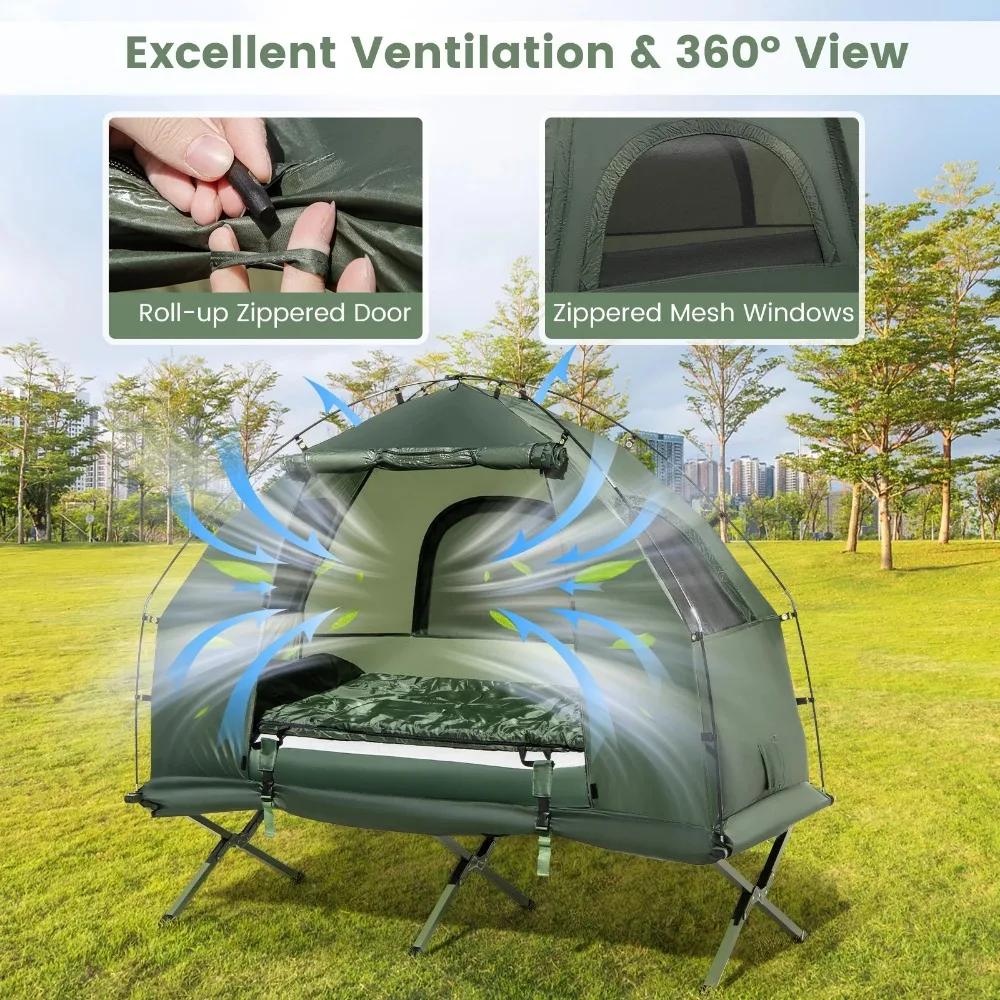
When Can a Regular Tent Work in Winter? (Limited Scenarios)
Despite the clear advantages of snow tents for winter conditions, there are limited scenarios where regular tents might suffice:
- Protected camping locations (dense forests, natural windbreaks)
- Brief overnight trips with favorable weather forecasts
- Lower elevations with minimal snowfall expectations
- Temperatures remaining above 20°F (-7°C)
- Little to no wind predicted
- Established winter campgrounds with facilities
To enhance a regular tent’s winter performance:
* Add extra guy lines for improved stability
* Choose protected campsites away from avalanche paths
* Clear snow thoroughly before setup
* Consider a ground cloth both under and inside the tent
* Minimize interior condensation by venting appropriately
⚠️ Important warnings:
* Always check detailed weather forecasts before attempting winter camping in a 3-season tent
* Have emergency communications and backup shelter options
* Be prepared to evacuate if conditions deteriorate
* Understand that regular tents provide minimal protection against sudden winter storms
For those seeking versatility across different weather conditions, multi-season tents for variable climates offer a middle-ground approach, though they still can’t replace true 4-season tents for harsh winter environments.
When Is a Snow Tent Absolutely Essential? (Must-Have Scenarios)
Some winter conditions demand the protection of a proper snow tent with no substitutes:
- Alpine environments above treeline
- Areas exposed to high winds (ridgelines, mountain passes)
- Regions with significant snowfall potential
- Extended winter expeditions lasting several days or longer
- Remote locations where rescue would be difficult or impossible
- Temperatures consistently below 20°F (-7°C)
- Any mountaineering or glacier camping situation
These scenarios present genuine safety concerns where tent failure could lead to dangerous or even life-threatening situations. When camping in remote winter locations, your tent becomes your primary survival system—not merely a convenience.
Winter adventures in challenging terrain often require specialized equipment beyond just the tent itself. Mountaineering tents designed specifically for extreme alpine conditions provide the foundation for a safe high-altitude base camp system.
Common Myths and Misconceptions About Snow Tents
Myth: Snow tents are heavily insulated.
Reality: Snow tents provide minimal insulation—typically only 5-10°F (3-6°C) warmer than outside temperatures. Their primary function is blocking wind and precipitation while maintaining structural integrity. Your sleeping bag and pad provide the actual insulation.
Myth: 4-season means “ideal for all seasons.”
Reality: While usable year-round, 4-season tents are overbuilt for summer conditions—they’re heavier, less ventilated, and usually hotter than necessary for warm weather. Most serious campers use 3-season tents for mild conditions and reserve 4-season tents for winter.
Myth: All 4-season tents offer equal protection.
Reality: Substantial variation exists within the 4-season category. Some are designed for moderate winter conditions while others are engineered for extreme mountaineering. Research specific models carefully for your intended use.
Myth: Snow tents are unnecessarily expensive.
Reality: The higher cost reflects specialized materials, additional reinforcement, more complex designs, and the extensive testing required to ensure reliability in life-threatening conditions. The price difference is justified when your safety depends on your shelter’s performance.
When making decisions about your outdoor shelter needs, choosing the ultimate compact shelter for two requires careful consideration of these realities rather than marketing claims.
Selecting the Right Tent for Your Adventure Needs
Choosing between snow and regular tents requires honest assessment of several factors:
Environmental Conditions: Analyze the typical and worst-case weather scenarios for your planned activities. Consider temperature ranges, wind exposure, precipitation types, and camping elevation.
Trip Duration: Longer trips in variable conditions may justify the weight penalty of more protective shelters.
Transportation Method: Car camping allows for heavier, more protective options compared to backpacking where every ounce matters.
Personal Experience Level: Beginners should err on the side of greater protection until they develop weather assessment skills.
Budget Considerations: Quality tents represent significant investments—consider rental options for occasional winter campers or invest in a versatile extended-season tent if you typically camp in milder conditions with only occasional winter use.
The decision framework ultimately balances protection needs against practical considerations like weight and cost. For those new to tent camping, understanding the basics of mastering two-person lightweight tent setup provides foundational knowledge that applies across tent types.
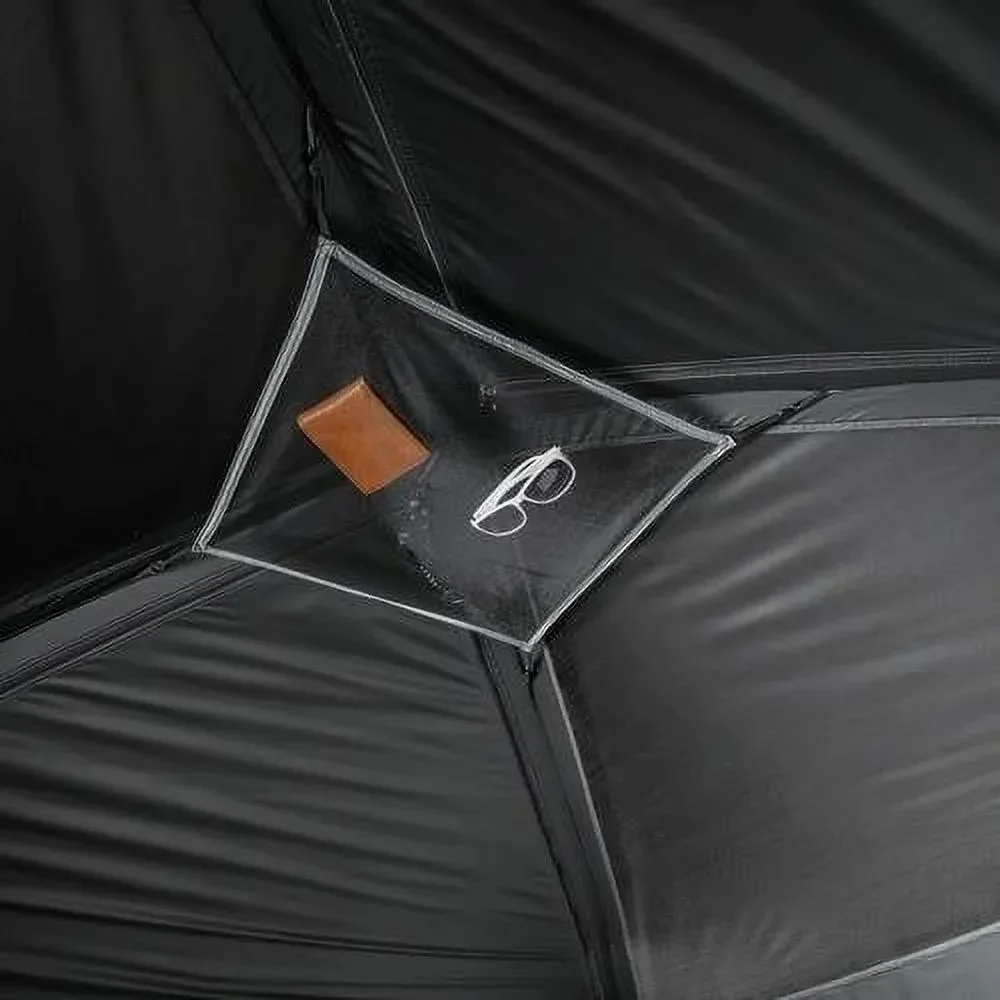
Essential Gear Companions for Winter Camping
A snow tent forms just one component of a complete winter camping system. For safe and comfortable winter camping, consider these critical companions:
Sleeping System: Pair your tent with sleeping bags rated at least 10°F (6°C) below expected temperatures and sleeping pads with R-values of 5+ for ground insulation
Snow Anchoring Tools: Standard stakes rarely work in snow—bring snow stakes, snow/sand anchors, or “deadman” anchor materials
Condensation Management: Pack absorbent microfiber cloths to wipe down interior walls and prevent moisture buildup
Snow Tools: A small avalanche shovel helps prepare tent platforms and manage snowfall during your stay
Appropriate Lighting: Winter camping involves longer nights—bring extra batteries and reliable headlamps
Heavy Duty 4 Season Tent, Mountaineering Tent, Winter Camping Tent
$870.40 Select options This product has multiple variants. The options may be chosen on the product pageUltralight Backpacking Tent, Ultralight Dome Tent, Winter Camping Tent
Price range: $369.63 through $370.07 Select options This product has multiple variants. The options may be chosen on the product pageHeavy Duty 4 Season Tent, Ultralight Freestanding Tent, Winter Camping Tent
$3,722.66 Select options This product has multiple variants. The options may be chosen on the product pageHeavy Duty 4 Season Tent, Winter Camping Tent
$638.69 Select options This product has multiple variants. The options may be chosen on the product pageHeavy Duty 4 Season Tent, Winter Camping Tent
$5,109.59 Select options This product has multiple variants. The options may be chosen on the product pageBackpacking Tent with Vestibule, Heavy Duty 4 Season Tent, Trekking Pole Backpacking Tent, Winter Camping Tent
Price range: $257.52 through $537.51 Select options This product has multiple variants. The options may be chosen on the product page
These components work together as an integrated shelter system. When evaluating different camping shelter options for two, consider how each element complements your tent choice to create a complete protection strategy.
Frequently Asked Questions About Snow Tents vs. Regular Tents
Can I use a snow tent in summer conditions?
Yes, but it may feel unnecessarily heavy and warm. Most 4-season tents have limited ventilation options compared to 3-season tents, potentially creating uncomfortable condensation and heat buildup during summer use. If purchasing only one tent, an extended-season model might offer better year-round versatility.
How much warmer is a snow tent than a regular tent?
Snow tents typically provide only 5-10°F (3-6°C) more warmth than regular tents. Their primary benefit is structural integrity and wind protection, not insulation. Your sleeping bag and pad deliver most of your thermal protection.
Are snow tents worth the extra cost?
For winter camping or mountaineering, absolutely. The price difference reflects stronger materials, additional features, and designs tested to withstand extreme conditions. When calculated as cost-per-use over their typical 7-10 year lifespan (versus 3-5 years for regular tents), the value becomes more apparent for frequent winter campers.
Can I waterproof a regular tent for winter use?
Additional waterproofing treatments can improve a regular tent’s water resistance but won’t address its fundamental structural limitations for snow loading or high winds. No amount of waterproofing transforms a 3-season tent into a safe 4-season option.
How long do snow tents typically last?
With proper care, quality snow tents often last 7-10 years of regular use, compared to 3-5 years for typical 3-season tents, partially offsetting their higher initial cost.
Making the Most of Your Tent in Challenging Conditions
Regardless of which tent type you choose, these tips help maximize performance in challenging conditions:
Strategic Site Selection: For regular tents, seek natural windbreaks like tree stands or rock formations. For snow tents, avoid avalanche paths while still finding spots protected from the strongest winds.
Proper Maintenance: Immediately dry tents after use before storage, apply seam sealer annually, and inspect poles and fabrics before each trip.
Snow Management Techniques: Build snow walls on windward sides of either tent type to reduce wind exposure. For regular tents, clear snow accumulation from the roof every few hours during snowfall.
Temperature Regulation: Vent appropriately even in cold conditions—managing condensation often requires accepting some cooler air circulation.
Emergency Preparations: Always have backup plans and communication devices when winter camping, regardless of tent type.
By understanding the fundamental differences between snow and regular tents and applying these practical techniques, you’ll make informed decisions that enhance both safety and enjoyment during your outdoor adventures across all seasons.

